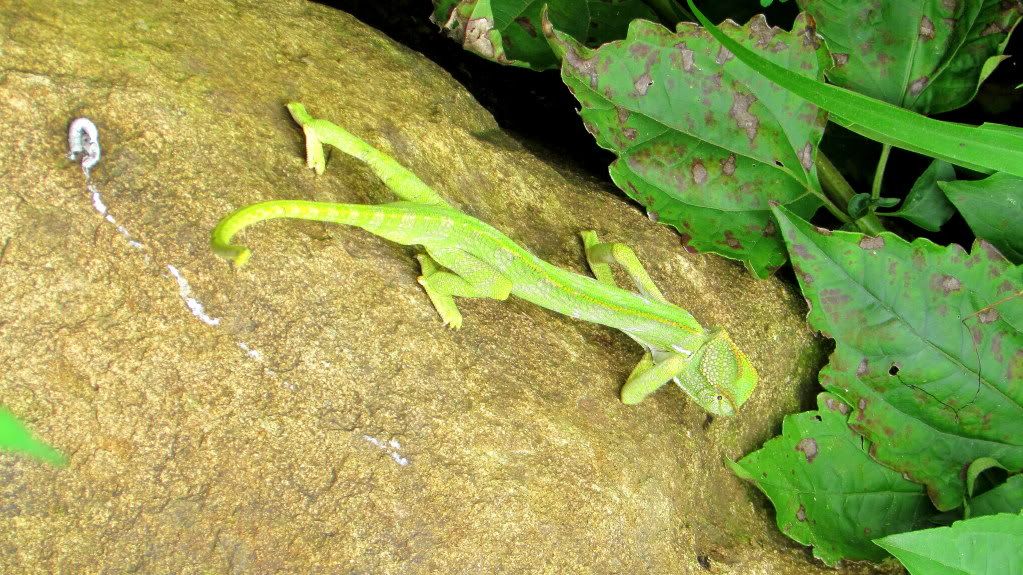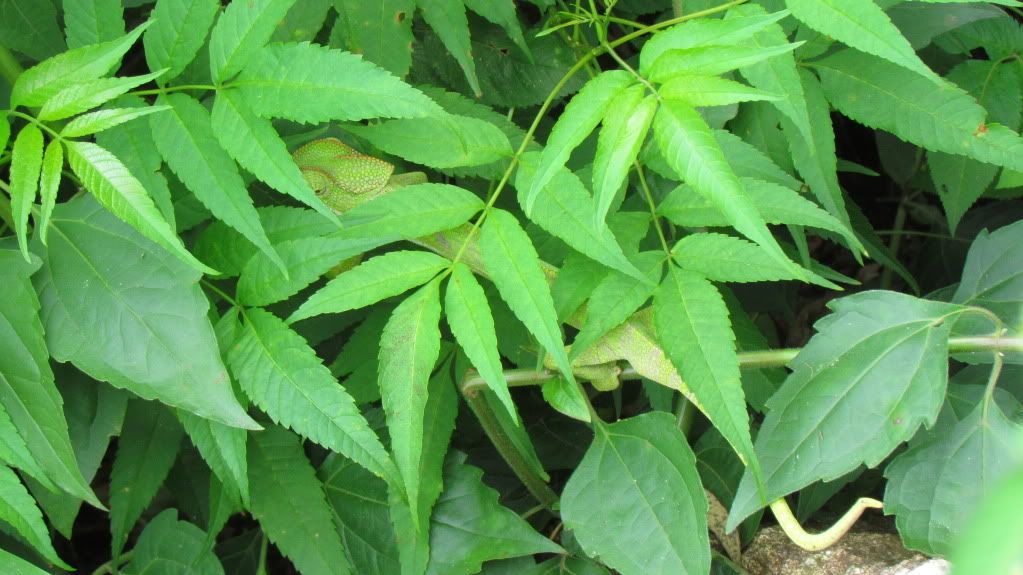Two friends and I were returning from Nandi Hills when the sight of this Chameleon brought us to a screeching halt.
 What a beauty! Luckily, it had not been flattened by traffic on the other side of the road, and was already on our side. It goose-stepped, or should I say, chameleon-stepped, into the grass verge. Watch this video, the progress of the reptile is funny, to say the least!
What a beauty! Luckily, it had not been flattened by traffic on the other side of the road, and was already on our side. It goose-stepped, or should I say, chameleon-stepped, into the grass verge. Watch this video, the progress of the reptile is funny, to say the least!
Here it is, closer to the grass verge:
It then climbed on to a rock:
And disappeared into the shelter of the leaves and greenery:
From there, we could see its moving cone of an eye peeking out at us, as if to ask, “Have you people still not gone?”
A delightful interlude in the morning! There are approximately 160 species of chameleon. They come in a range of colors, including pink, blue, red, orange, turquoise, yellow, and green. They have an uncommon arrangement of their toes, two facing forward and two backward. Such toes are called zygodactylous.
Their eyes, too, are wonderful. They can move separately, and yet form a 3-D image in their brains. Some species (not all, and probably not the one pictured above) can change colour, giving them their reputation in myth and folklore, and their names in many languages: Bahurupa (“many forms”) in Sanskrit, and derivatives of that name in several languages such as Hindi and Tamil. In Kannada, it’s called Gosumbe.
So, look out for the Chameleon, and watch its antics!



